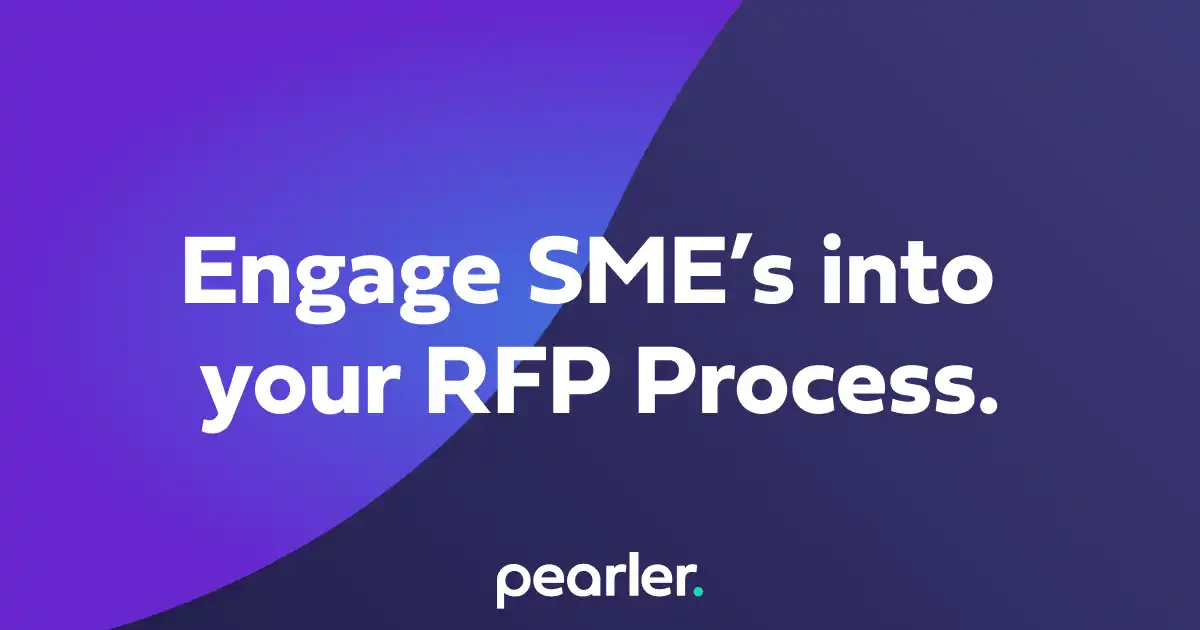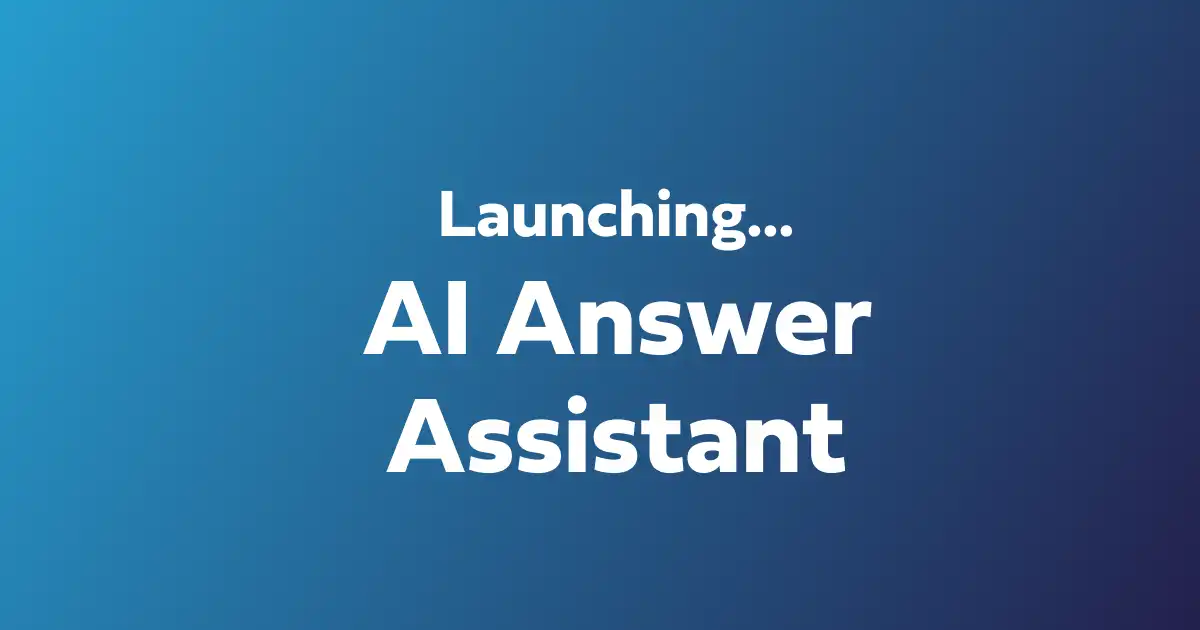Get your SME's engaged in the RFP Process

8th January 2023
If given the choice to change or not to change, what would you prefer? For most people, the answer is easy. People almost always prefer for things to stay the same, especially when it already works for them. According to the director of the Management Centre UK, Charlotte Scott, “People fear change if they don’t understand the reason for it – and then they resist it. Change causes uncertainty and means pushing people out of their comfort zones. However much we might complain about them, it’s our ‘routines’ that make us feel secure.” Fear of the unknown is what pushes people to resist change, even for subject matter experts (SMEs). But who could honestly blame them? It takes a considerable amount of time and effort to deal with the challenges that come with change. However, change is not as negative as most people view it. In fact, there are changes that, despite consuming sizable time and effort, create better results. A change that most people are still hesitant to accept is the automation of the RFP process. Advancing to a fully digital proposal program powered by RFP process automation stored in a Content Library that is continually updated, leads to continuous improvements and better results.
Initially, most SMEs are the ones that are sceptical about change, but with the right encouragement, you can effectively influence them to see the merits. However, before influencing them to get on board, you must always keep in mind the most important advice that will be constantly repeated throughout this article: their time must always be respected. Because SMEs already have their calendars set with responsibilities they are meant to prioritise.
On top of trouble-shooting engineering issues, dealing with clients, and creating frameworks of product demos, asking for their help with responses to any RFx (RFP, RFI, RFQ, DDQ, security questionnaire, etc.) means obligating them to allocate some of their valuable time.
Although this might already sound like the stopping point of the change you want to implement, so as to not trouble others, the proficiency of SMEs is crucial to complete the RFP process in order to bring in revenue to your company the same way SMEs need the company. As long as the involvement and commitment of the SMEs are attuned with the company’s goals, it is guaranteed that success will be achieved.
SMEs are already expected to be bombarded by emails, which means requests can be easily lost or even deleted amidst the chaos. Always remember that communication is key so keep comms in order. It could become increasingly frustrating for them to organise these messages and determine which ones are the most recent, especially if they happen to be travelling, visiting the client site, or attending a conference. Automation of the RFP process ensures a consistently updated dashboard containing the most current action items that can also be completely personalised. This will effectively organise SMEs inbox and will eliminate the confusion permanently.
Since SMEs already have a lot on their plate, it is instrumental for you to do the heavy-lifting. Be the brawns to their brains, lessen their workload. Ensure that 70-80% of a response using an RFP Content Library, is completed by the proposal team. This significantly reduces the amount of the work for SMEs, leaving them the responsibility of only reviewing the responses. Which effectively saves time by avoiding having them answer repetitive questions.
Working with the right RFP automation software provides SMEs with additional functionality, such as extensive search options, marketing-approved templates, and targeted action items. Although this may seem as an effective way to reduce the burden on them, SMEs are resistant to change so it is important to show them that the changes will not only simplify their lives, but the fact that they can also adapt to it rather quickly. Spare even as short as a 30-minute training session to kick off the RFP process, or release guidelines that are easy to understand showing the value of what the change can do.
Being in the RFP automation software zone means that you already have access to an RFP Content Library, so take full advantage of this: keep your RFP Content Library regularly updated. SMEs are particular with the questions that they have already provided answers to, so add these answers to the database immediately so as to not waste their time answering the same question again. The same questions could always be raised to them but only to review for accuracy.
Remind your SMEs that they are in-charge. If your field of choices for an RFP have been narrowed down or if you win an RFP, the SMEs are expected to be first onsite. If the clients happen to have concerns about what your products and services will do, the SMEs that are onsite are the ones responsible for explaining that it may not be the case. This means that SMEs will have to account for any mistakes in the RFP response, so ensuring that they take control by helping them understand their role will lead to a straightforward transaction and a promising collaboration with clients.
Always remember to keep your RFP Content Library regularly updated with completed responses from the proposal team. These are the most efficient ways in helping lessen the workload of SMEs that can also come in handy during live proposals.
It is also important to keep in mind that SMEs have their own language and are more comfortable in providing content in it. Do not be surprised if grammar and wordsmanship is not their top priority, because it will be the responsibility of the proposal team to work around the delivered content and transform it to a powerful RFP response.
When responses start coming in, auditing must also begin immediately so as to not overwhelm yourself in the process. That way, you will be able to utilise the benefits of your content audit. It may look complicated and challenging at first, but when you start prioritising, everything will eventually fall into place.
Always prioritise the most used content. This content should be reviewed by SMEs rather than rarely used content. It will not only save you time and effort but it will give the SMEs and their managers the lasting impression that you are dedicated to making their job more efficient and less demanding. Taking the extra steps guarantees them that you are as involved as they are in the process of obtaining better results.
RFP automation softwares include “guest” functionality for an instance like this so that external SMEs may gain access. Regardless of whether they are internal or external SMEs, you are still working towards the same goal so an effective collaboration is necessary.
Working with guests requires close communication, which means sending them brief, single-page PDF instructions on how to use your chosen RFP solution is the best option. The comments function can also be utilised, so make sure to take advantage of it so that they will have more information on what they need to do. Mind that you have to give your guests as much notice as possible and also make it easily manageable for them when asking for their help.
A little more challenge in auditing content with guests should not come as a surprise either. However, this is nothing close communication cannot solve. Communicate ahead of time that you’re going to keep a guest’s content in the RFP Content Library. However, you won’t bother them to review it until their portion of the solution is proposed. They need to know that when you contact them, you’re doing so at the interest of a substantial business value potential.
Finally, acknowledge the effort of your SMEs, because despite their responsibilities that have been set prior, they still chose to spend some of their valuable time on your RFP response. Even the simplest gifts or tokens will be greatly appreciated for recognising their hard work.
Respect: To Get It, You Must Give It
Keep in mind that in order to respond to a proposal, your SMEs must have your back. They are your most important resource in order to sail calmly through the strong and unsteady current of change. You may be the captain of the ship, but you are not the ruler of the sea, so you need your sailors to make sure the ship sails the proper route.
Collaboration softwares such as Pearler.ai can provide you with a demo in order to learn more about setting up a more efficient RFP process for the benefit of SMEs.
Other Blogs
Looking for more help using Pearler? No problem. Here are some other guides to help you get to know your way around all our great features.

Answer Collections & Tag Filtering
Gold standard just got higher - Pearler has just launched Answer Collections & Tag Filtering which help to keep all of your content organised

Launching our AI Answer Assistant
Ridiculously great RFP responses just became childs play. Suggest, Write & Re-write fully integrated.

Introducing Pearler's New Compliance Insights Feature
Understanding your compliance to an RFP or Security Questionnaire is critical for Product Managers to know where R&D should invest